#historicfires
Explore tagged Tumblr posts
Text
Woonsocket Mill Fire: Historic Building Destroyed, Community Reflects

This past weekend, a devastating fire engulfed the historic Woonsocket Mill, a landmark that stood for over a century. The blaze, which started in the early hours, has left the community in shock as they mourn the loss of a piece of their history.
The mill, known for its iconic architecture and significant role in local industry, had been a symbol of Woonsocket's rich past. Firefighters battled the flames for hours, but the building was ultimately lost. Thankfully, there were no injuries reported.
Residents are now coming together to reflect on the mill's impact and share memories of its place in their lives. As the community grapples with this loss, they are also looking ahead, considering how to honor the mill's legacy and rebuild their sense of history.
0 notes
Text
From Amazement to Ash: The Blaze at Barnum’s American Museum
Throughout time few names ring to the tune of "showman" as strongly and loudly as P.T. Barnum. Born on a Connecticut farm in 1810, Phineas Taylor Barnum tried his had at a variety of professions including Bible selling and shop keeping before moving to New York City in 1834 to begin his entertainment career. It was amid the tensions of this ever-expanding and changing metropolis that he developed an arsenal of tactics that would help him change the very face of commercial entertainment in New York City and beyond. In 1841 he opened a business that brought and unprecedented degree of spectacle, magic, and awe to the people of the city that never sleeps. In November 1864 it was lucky. On the morning of July 13th 1865 it was open for business. By sunset it was gone.
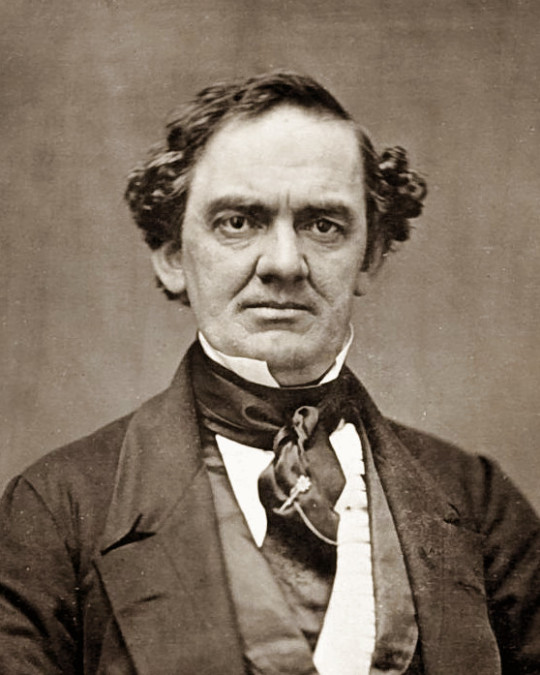
P.T.Barnum
P.T. Barnum's American Museum was located at the intersection of Broadway and Ann Street before later moving up the block to the corner of Fulton Street. Originally John Scudder's American Museum, Barnum purchased the building in 1841 and transformed it into a palace of shock, awe, and amazement that absolutely fascinated every New Yorker that crossed its path and doorways. Outer windows were painted with the words "BARNUM'S MUSEUM" in a size that could not be ignored but as flashy as the exterior was, it was nothing compared to what awaited behind the walls. Inside the building were five floors packed with peculiarities including wax figures of historical fame such as Napoleon, war relics, scientific instruments, a segment of a tree trunk where Jesus once sat, preserved bodies, the clubs that killed Captain Cook, portraits, an oyster bar, gigantic animated models of places like Niagara Falls, massive dioramas, a rifle range, stuffed specimens and fossils from all branches of nature, and the famous FeeJee Mermaid. It was already a massive list, but these were not even the exhibits that were alive. The living collection of Barnum's American Museum intermingled with the rest to create a place that was part museum, zoo, circus, freak show, and everything in between. Humans on display included fortune tellers, ‘The Giantess" Anna Swan, General Tom Thumb, Native American performers, Jenny Lind, Chang and Eng, and a long list of jugglers,magicians, "fat men" and other talent that made their careers in sideshows. The animals that called Barnum's museum home included monkeys, birds, seals, hippopotamuses, tigers, alligators, snakes, elephants, kangaroos, hundreds of fish in massive aquariums, and even two fully grown white whales that lived inside a twenty-five foot tank on the second floor. If these were not enough to entice a visitor there was also a lecture hall and a theater where two regular performances or lectures were given daily.
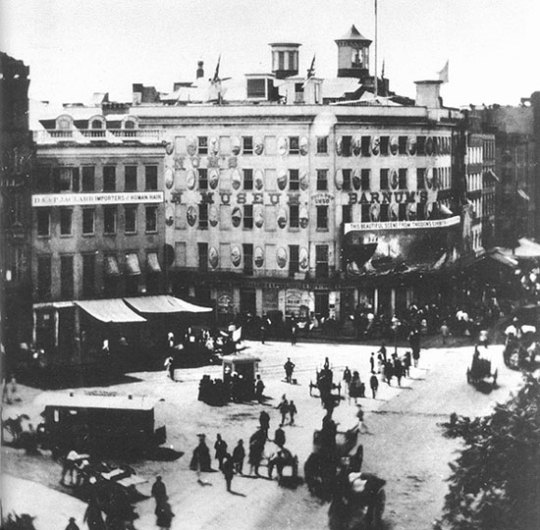
Barnum’s American Museum circa 1858.
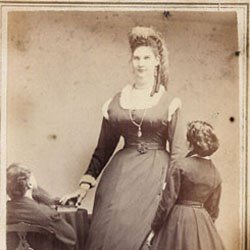
The Giantess Anna Swan.
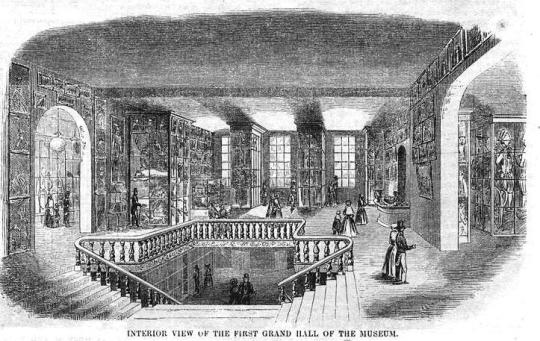
The first grand hall of the museum.
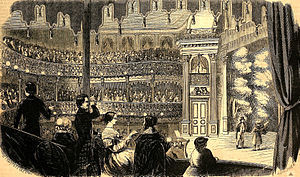
The Lecture Room circa 1853.
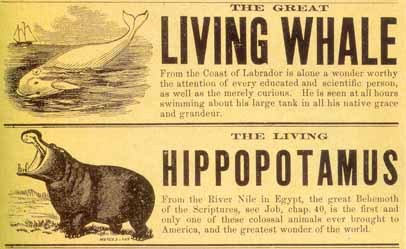
Advertisement for some of Barnum’s animal exhibits.
All of these attractions were available to anyone for the price of 25 cents and the price and promise of amazement kept the museum packed with people from all walks of life. The museum was equal ground to lower, middle, and upper class all of which could regularly be seen mingling, navigating the halls, and peering at the same spectacles which produced the same reactions regardless of one's lot in life. Barnum himself ensured a steady stream of people by using some of his master skills as an advertiser and performer. He would anonymously write scathing reviews of what could be found inside to entice people to see such alleged horrors with their own eyes. He challenged accusations that his items were fake by telling people to come in and decide for themselves and would deliberately "leak" controversies to entice people inside. To Barnum all publicity was good publicity and he was a master at generating his own word of mouth. His plans worked and the museum, open for fifteen of every twenty-four hours and could often count nearly 15,000 visitors per day. It is estimated that between 1841 and 1865 the museum was visited 38 million times when the total population of the United States was under 32 million.
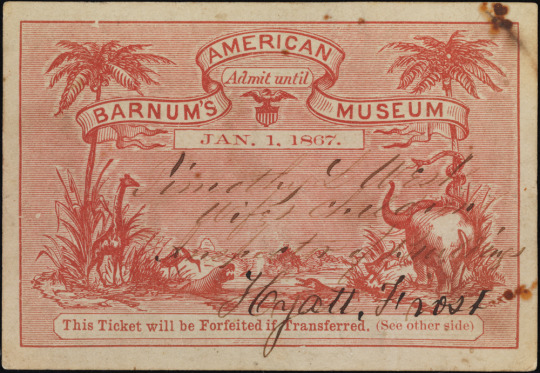
The museum was able to become an entertainment monolith in one of the most rapidly evolving cities in the world, but in 1864 Barnum's American Museum also became a target.
By November 25th 1864 tensions were running high in the states on account of the Civil War that had been tearing the country apart at the seams. On that evening Confederate agents in New York City planned a series of arson attacks as retribution for the Union’s destruction in the Shenandoah Valley weeks earlier. Armed with twelve dozen bottles of an incendiary mixture called "Greek Fire" the group of Confederates began their attack on New York by settling fire to hotels. During the arson attacks one man decided on a whim to also set Barnum's museum ablaze and at 9pm that evening an employee of the museum discovered fire on the fifth floor staircase. The occupants and visitors heard his warning of fire and thousands of people fled into the streets while the fire was quickly extinguished. The damage to the building was minimal and Barnum quickly made statements assuring that his museum was "as safe a place of amusement as can be found in the world" while detailing plans to protect the building should another fire ever take place. Unfortunately for Barnum, he was not done dealing with fire and less than a year later his museum would face an inferno that he never could have planned for.
At approximately 12:30pm on July 13th 1865 Barnum's entertainment empire began it's final curtain call when a museum employee ran up from the basement yelling that his office was on fire. An alarm went out to the fire department and the local police while visitors quickly flooded the streets to escape the quick-moving blaze. Employees of the museum flew into a panic with performers racing through the theaters and dressing rooms indiscriminately grabbing pieces of wardrobe, wax figures, and whatever other curiosities they could amid the thick smoke. People inside began hurling things out of windows where a massive crowd was forming to watch the building quickly being engulfed in flame. The spilling of items into the streets only enhanced the chaos with witnesses screaming that people were being rescued or jumping only to then learn they were wax figures or statues being tossed from the flames. By 1pm the building was beyond doomed, a fate sealed when the roof caved in leaving the structure resembling what the New York Times called "the crater of a vast volcano.” It also began to spread to other buildings on Broadway, Ann, and Fulton streets and the fire department began to pour water on the towers in order to prevent the fiasco from spreading. Firefighters at the museum exited the building holding small cases of rare coins and stuffed owls but no such regard was given to the huge numbers of animals living at Barnum's American Museum. Of the shapes diving from the windows and charging from doors, many were animals set free by the fire only to be thrown into a tangle of smoke and turmoil that they barreled through trying desperately to escape. Some, upon hitting the streets in sheer delirium were shot by police. Most were taken by the flames including the two whales which perished in the heated water. The intense heat forced the massive crowd of spectators back into the surrounding city blocks. At 1:30pm a massive crash signaled that the museum was starting to collapse and the entire Ann Street side fell to the ground throwing more smoke, dust, bricks, and chaos into the air. This was quickly followed minutes later by the front sides of the building facing Park Row and Broadway falling to the ground throwing the fire across the streets into surrounding businesses. By 3pm the fire was extinguished and left behind were the remains of nineteen buildings in addition to the absolute ruin of Barnum's American Museum. Miraculously no human lives were taken in the ordeal but the loss of animal life and curiosities was devastating.
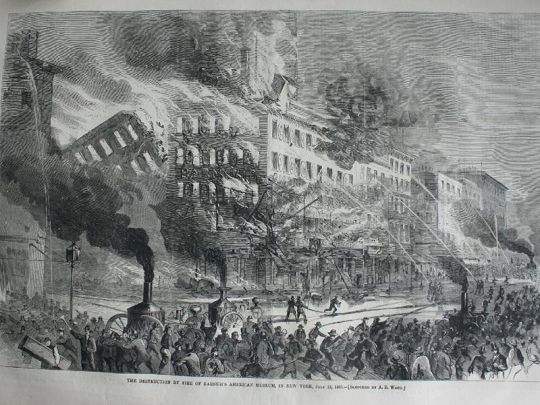
An illustration of the Barnum’s American Museum fire as it appeared in Harper’s Weekly.
The news of Barnum's museum being totally demolished drew very mixed reactions. Although the museum was visited by millions and loved by many in New York, others were thrilled that the business was destroyed, calling it a deplorable mockery of good taste and begging for the city to now create a "real" and respectable museum for it's citizens. On July 27th 1865 Edwin Lawrence Godkin wrote a piece for The Nation celebrating the destruction and opening the article with "Barnum's Museum is gone at last" before going on to state that "The worst and most corrupt classes of our people must seek some new place of resort, and other opportunities of meeting one another.” He wrote that the only reason so many people visited the museum was to see the mess that it was kept in and to marvel at how terribly it was organized and displayed. Attacking the lecture room he accused that it "furnished for the entertainment of its patrons the most vulgar sensation dramas of the day. Its patrons were suitably entertained. It has been many years since a citizen could take his wife or daughter to see a play on that stage.” He begged someone to give the city "a real museum for his own enlightenment, the good of his children, and the honor and benefit of the community."
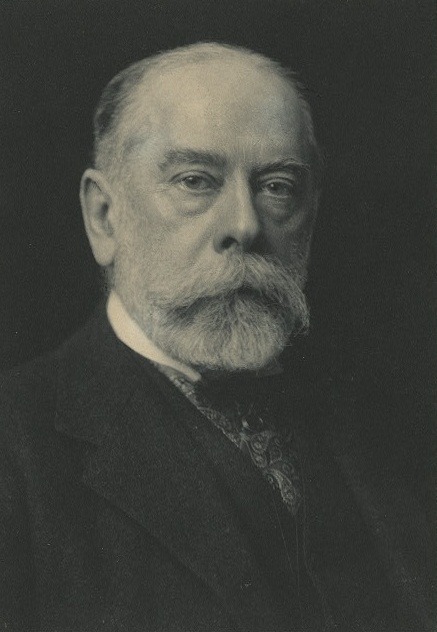
Edwin Lawrence Godkin
Barnum was never a man to spare words and his answers to these opinions was fierce. In his response to The Nation he remarked that his museum had a collection that sought to attract and entertain everyone because he had to run and support it without the government funds enjoyed by other more respectable museums "That class for which it [my Museum] would seem to have been originally intended would not support a proper museum pecuniarily. More’s the pity–but such is the stern fact." He also strongly fought the accusations of vulgarity and by stating:
"No vulgar word or gesture, and not a profane expression, was ever allowed on my stage! Even in Shakespeare’s plays, I unflinchingly and invariably cut out vulgarity and profanity. It is equally incorrect that "respectable citizens did not take their wives daughters" "to see a play on that stage." Your writer doubtless supposed he was stating facts, but let him enquire, and he will find that nothing could be further from the truth. I am sensitive on these points, because I was always extremely squeamish in my determination to allow nothing objectionable on my stage. I permitted no intoxicating liquors in the Museum. I would not even allow my visitors to "go out to drink" and return again without paying the second time, and this reconciled them to the "ice-water" which was always profuse and free on each floor of the Museum. I could not personally or by proxy examine into the character of every visitor, but I continually had half a score of detectives dressed in plain clothes, who incontinently turned into the street every person of either sex whose actions indicated loose habits. My interest even depended upon my keeping a good reputation for my Museum, and I did it to a greater degree than one out of ten could attain who had charge of a free museum, or even a free picture gallery"
He ended his rebuttal with a promise that more than likely made Godkin and those agreeing with him cringe. Barnum declared that if he were to build another museum it would be filled to the brim with wonders from all over the world, and that it would be fireproof.
Barnum did in fact build another museum, once again on Broadway, and once again filled with all manner of animals, circus performers, and spectacle every bit as flamboyant as his previous American Museum had been. The front of the building had exotic animals painted alongside the windows and the roof was a strolling garden that offered both stretching views of the city and daily hot air balloon rides. Barnum kept his word on his collection, but he unfortunately did not follow through on his other promise and on March 3rd 1868 his museum was swallowed by flames due to a defective flue on the third floor. Once again the alarms rang out and stunned crowds gathered but this time the temperatures were cold and due to a recent snowstorm the fire department was delayed in their arrival only to be further hindered by the fire hydrants being frozen. The building was destroyed by the blaze within an hour. Again there was no loss of human life, but again most of the items and the animals inside were taken by the fire.
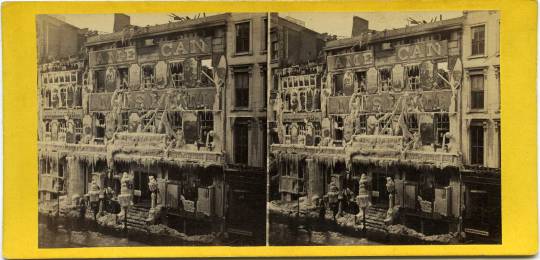
The frozen ruins of Barnum’s museum after the 1868 fire.
This fire marked the end of Barnum's careers in the museum business but by no means did he depart the entertainment field. In 1870 at the age of sixty he founded the P. T. Barnum's Grand Traveling Museum, Menagerie, Caravan & Hippodrome along with William Cameron Coup. It was an endeavor that through many reincarnations would become the Ringling Brothers Barnum & Bailey Circus which defined the very name of circus entertainment from April 1871 until its closing on May 21st 2017.
Barnum’s American Museum left us in 1865 but it lives on today digitally. To explore a virtual form of the museum and a wealth of related materials please visit The Lost Museum here
#husheduphistory#featured articles#ptbarnum#museum#BarnumsAmericanMuseum#NewYorkCity#NewYorkCityHistory#HistoricFire#fire#circushistory#sideshow#Barnum#museumhistory#FultonStreet#Broadway#AnnStreet#NYFD#ringlingbros#NYC#nychistory#chang and eng the siamese twins#JennyLind#TomThumb#circus#fiji mermaid#amazing#tragedy#truestory
2 notes
·
View notes